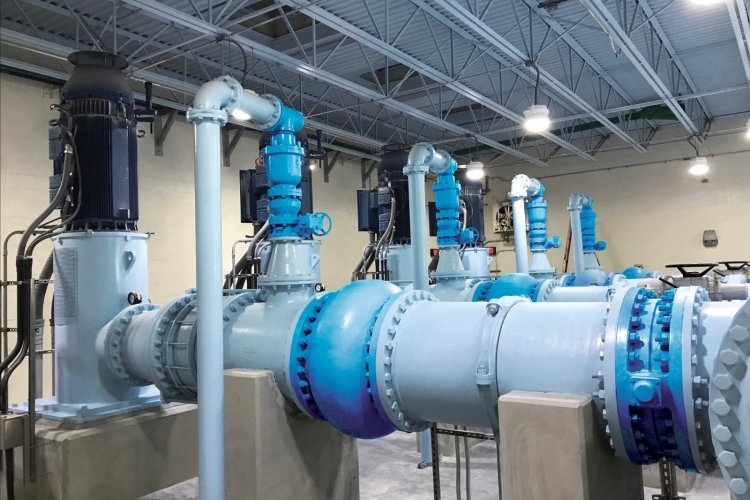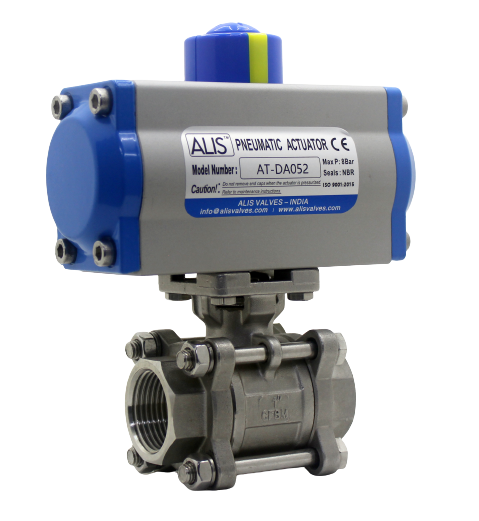Crucial Role of Industrial Valves in Process Control and Automation
Discover the crucial role of industrial valves in process control and automation. Learn how these components regulate flow, pressure, and safety, and explore trends in smart valve technology for improved efficiency and reliability.

Industrial valves are critical components in process control and automation systems, playing a vital role in regulating the flow of gases, liquids, and slurries within various industries. These components are essential for ensuring the smooth, safe, and efficient operation of processes, making them a cornerstone in sectors like oil and gas, chemicals, power generation, pharmaceuticals, food and beverage, and water treatment.
Understanding the Function of Industrial Valves
Industrial valves are devices designed to control, regulate, or direct the flow of fluids by opening, closing, or partially obstructing passageways. Depending on the application, they can handle different media, ranging from corrosive chemicals to steam, water, and gases. The design of valves varies based on the operational requirements, such as pressure, temperature, and the nature of the fluid they are handling.
The primary functions of industrial valves include:
- Flow Regulation: Valves control the flow rate of the medium in a pipeline, ensuring that processes operate within specified parameters.
- Pressure Control: Valves maintain and control pressure levels within pipelines, crucial for safety and efficiency.
- Safety Assurance: Safety valves are designed to prevent overpressure situations by releasing excess pressure, protecting equipment and personnel.
- Direction Control: Valves can direct fluid flow in different directions as required by the process configuration.
- Isolation and Shutoff: Isolation valves enable maintenance and emergency shutdown by stopping the flow entirely.
Types of Industrial Valves
There are several types of industrial valves used across various applications. Each type has unique features suited for specific functions:
- Gate Valves: Gate valves are used for on/off control, with minimal pressure loss when fully open. They are ideal for isolation purposes in pipelines that transport water, oil, and natural gas.
- Globe Valves: These are used for throttling applications. They provide good flow regulation and are often found in industries requiring precise flow control.
- Ball Valves: Known for their durability and reliability, ball valves are used in situations requiring quick shutoff. They are suited for gas applications and provide bubble-tight sealing.
- Butterfly Valves: Butterfly valves are compact and lightweight, making them ideal for handling large flow rates. They are widely used in water supply, wastewater treatment, and food processing industries.
- Check Valves: These one-way valves allow fluid to flow in only one direction, preventing backflow that can damage equipment or cause process interruptions.
- Pressure Relief Valves: Designed to release pressure when it reaches a set point, these valves are crucial for protecting equipment from overpressure situations.

The Role of Industrial Valves in Process Control
Industrial valves are integral to process control systems, where they are interfaced with various sensors, controllers, and actuators. They enable precise control over the flow of materials and contribute to maintaining product quality, efficiency, and safety. Here’s how they support process control:
- Automated Control: With advancements in automation, many valves are now equipped with actuators that allow them to be operated remotely. This enables real-time adjustments to flow rates and pressures, reducing the need for manual intervention.
- Integration with Control Systems: Valves are connected to Distributed Control Systems (DCS) and Programmable Logic Controllers (PLC), enabling centralized monitoring and control. This integration allows operators to manage complex processes more effectively.
- Precision in Regulation: In industries like pharmaceuticals and food processing, maintaining precise flow rates and pressures is crucial for product consistency. Control valves play a significant role in ensuring these parameters are met.
- Response to System Dynamics: Control valves can respond dynamically to changes in system conditions, such as variations in pressure or temperature, by adjusting flow rates accordingly.
Automation and Smart Valve Technology
With the rise of Industry 4.0 and digitalization, traditional industrial valves are evolving into smart devices. Smart valves are equipped with sensors, actuators, and communication modules, enabling enhanced performance monitoring and control. These innovations offer several benefits:
- Predictive Maintenance: Smart valves can monitor their own health by tracking parameters like temperature, pressure, and vibration. This data can be used to predict potential failures and schedule maintenance proactively, reducing downtime.
- Remote Monitoring and Control: Through wireless communication, operators can monitor and control valves from a remote location. This capability is especially valuable in hazardous environments or geographically dispersed installations.
- Improved Efficiency: Automation and smart valve technology can optimize process efficiency by ensuring that valves operate at optimal conditions, reducing energy consumption and improving overall system performance.
- Data Analytics: The data collected from smart valves can be analyzed to gain insights into process performance and identify areas for improvement.
Safety and Reliability in Critical Applications
Safety is a paramount concern in industrial settings, particularly in industries dealing with hazardous materials or extreme conditions. Industrial valves contribute significantly to the safety and reliability of such applications:
- Emergency Shutdown Systems (ESD): In the event of an emergency, isolation valves can shut down operations quickly to prevent accidents. ESD systems rely on the quick and reliable operation of valves to ensure safety.
- Fail-Safe Operations: Some valves are designed with fail-safe features, ensuring they move to a safe position (open or closed) in case of power failure or loss of control signal.
- Corrosion and Material Compatibility: Valves must be made from materials that are compatible with the process medium to prevent corrosion, which can lead to leaks or catastrophic failures.
Future Trends in Industrial Valves
The industrial valve market is continuously evolving with technological advancements and growing industry demands. Some future trends include:
- Increased Adoption of Smart Valves: As industries move towards automation and smart manufacturing, the demand for smart valves with integrated sensing and communication capabilities is expected to rise.
- Advanced Materials: Development of new materials that can withstand extreme temperatures, pressures, and corrosive environments will expand the applications of industrial valves.
- Sustainability and Energy Efficiency: Energy-efficient valve designs that reduce frictional losses and leakage are becoming more popular, aligning with global sustainability goals.
- Cybersecurity: With the increased connectivity of smart valves, cybersecurity becomes a concern. Ensuring that these systems are secure against cyber threats will be a priority for valve manufacturers.
Conclusion
Industrial valves are fundamental components in process control and automation systems. Their ability to regulate flow, pressure, and direction, along with advancements in automation and smart technology, make them indispensable in modern industrial processes. As industries continue to advance and embrace new technologies, the role of industrial valves will only become more crucial, ensuring safety, efficiency, and reliability in operations.
What's Your Reaction?















